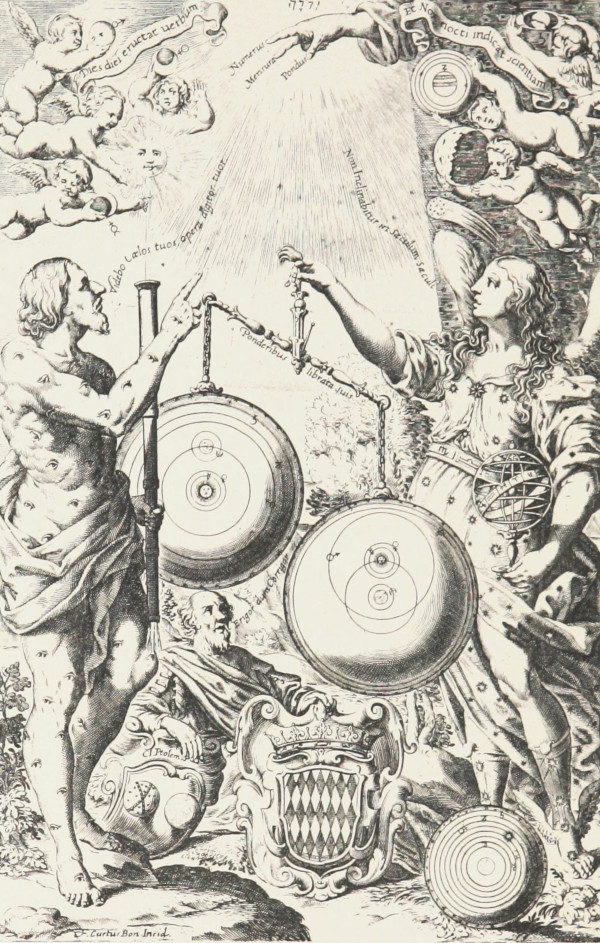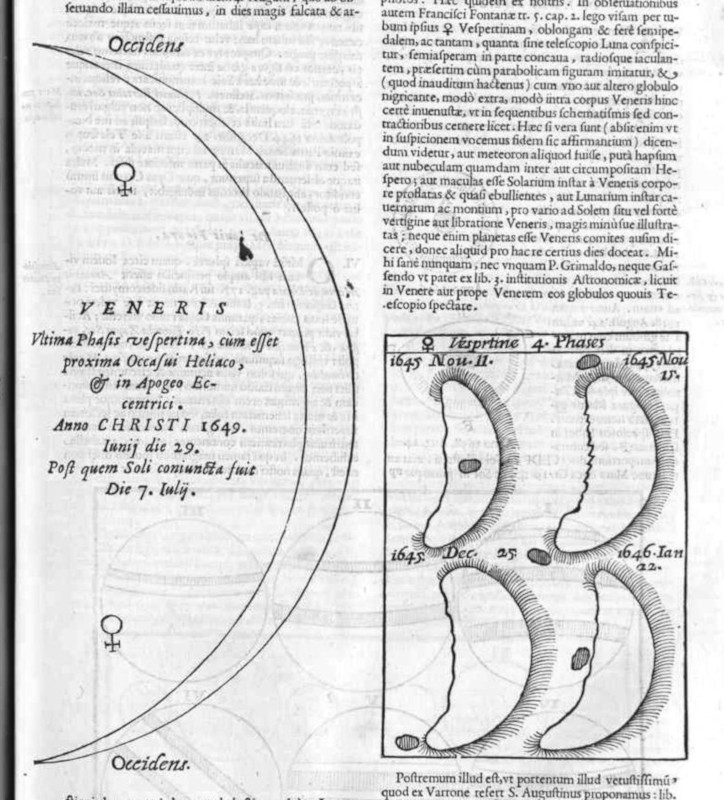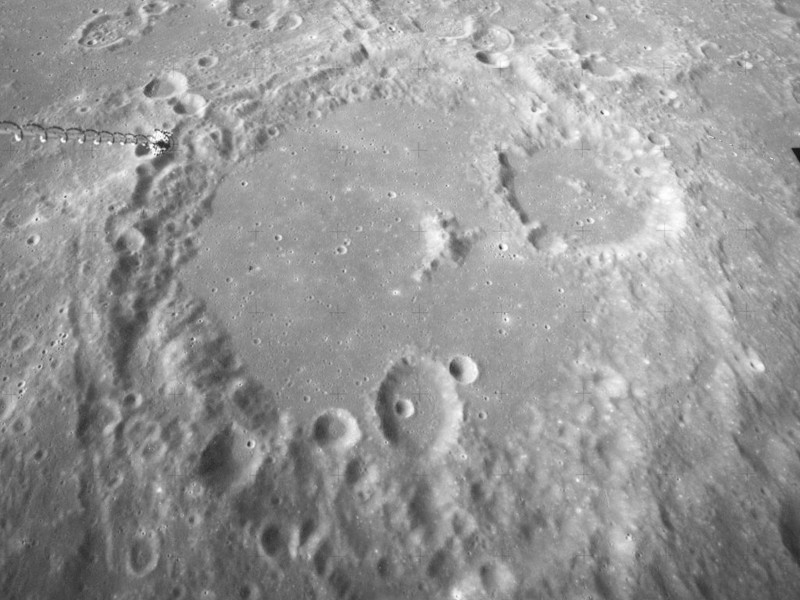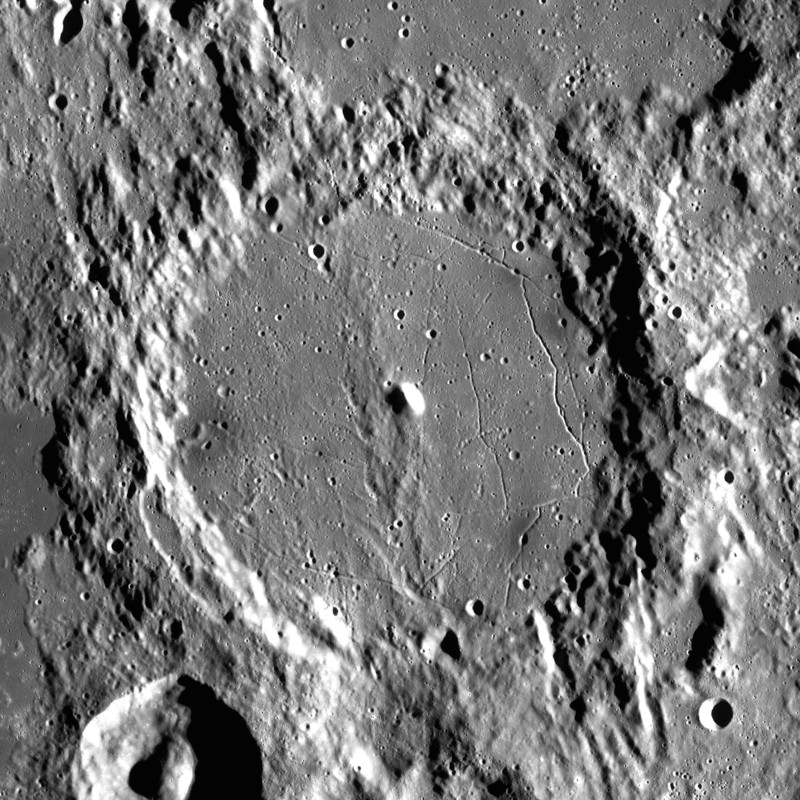Almagestum Novum (Book) AKA New Almagest
Events (1)
for 
Attachments
Frontispiece of Riccioli's 1651 New Almagest Mythological figures observe the heavens with a telescope and weigh the heliocentric theory of Copernicus in a balance against his modified version of Tycho Brahe's geo-heliocentric system, in which the Sun, Moon, Jupiter and Saturn orbit the Earth while Mercury, Venus, and Mars orbit the Sun. The old Ptolemaic geocentric theory lies discarded on the ground, made obsolete by the telescope's discoveries. These are illustrated at top and include phases of Venus and Mercury and a surface feature on Mars (left), moons of Jupiter, rings of Saturn, and features on the moon (right). The balance tips in favor of Riccioli's "Tychonic" system.
Venus Phases from New Almagest The crescent phases of Venus and detailed representations of its appearance as seen through a telescope, from Riccioli's 1651 New Almagest.
Riccioli's Moon Map Map of the Moon from G. B. Riccioli's 1651 Almagestum Novum.
Riccioli's Projectile Argument Illustration from Riccioli's 1651 New Almagest showing the effect a rotating Earth should have on projectiles. When the cannon is fired at eastern target B, cannon and target both travel east at the same speed while the ball is in flight. The ball strikes the target just as it would if the Earth was immobile. When the cannon is fired at northern target E, the target moves more slowly to the east than the cannon because the ground moves more slowly at more northern latitudes (and hardly moves at all near the pole). Thus the ball follows a curved path over the ground, not a diagonal, and strikes to the the east, or right, of the target at G.
Albategnius Lunar Crater Oblique view from Apollo 16 (craft's gamma-ray spectrometer visible in upper left), facing south. The crater is named after Arab astronomer al-Battani - name originally assigned by Italian astronomer Giovanni Riccioli in 1651.
Lunar Crater Alphonsus Named after King Alfonso X of Castile by Riccioli in 1651 (originally "Alphonsus Rex") Mosaic of photos by Lunar Reconnaissance Orbiter, made with Wide Angle Camera. Size of the image is 170×170 km, north is approximately up, illumination is from the east.
astronomy
physics













